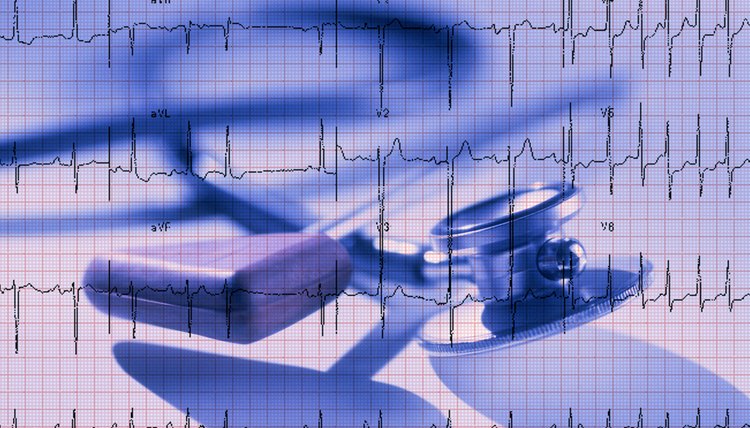Exercise After Ablation

Ablation is a procedure used to treat abnormal heart rhythms. It can be performed through an open heart surgery or through a catheter. The Mayo Clinic notes that catheters make the procedure much less invasive with a relatively short recovery time. A shorter recovery time allows you to get back to your physical activity routine sooner.
Procedure
Ablation uses heat to destroy malfunctioning muscle cells of the heart. An electrode is led to the heart by a catheter focusing on the overactive or damaged cardiac muscle. The heat is focused on that specific area to kill the excited cells to stop them from generating extra impulses. You can sometimes go home the same day as the procedure, or you may have to stay one to two days in the hospital for monitoring.
Recovery
Cardiac ablation has a high success rate with very few complications. The most crucial part of recovery is lying down for 4 to 6 hours post-procedure to aid in the stopping of bleeding from the catheter incision site. According to the Mayo Clinic, once released from the hospital, you can usually resume normal household activities within a few days.
Complications
The National Heart, Lung, and Blood Institute name the following problems to watch for post-procedure. Continuous bleeding at the insertion site, infection of the insertion site, irregular or rapid heartbeats or fainting are all symptoms that you should seek out medical attention for. If any of these occur, you may be instructed by your physician to reduce your activity level until the issues are resolved.
Exercise
The insertion site from the ablation will usually heal in one week, allowing you to return to your normal daily routine. If your normal routine included regular exercise, you should start out slow. You should monitor your heart rate before, during and after exercise. It may be beneficial to use a heart rate monitor to allow you to watch your heart rate response with exercise. It is normal for your heart rate to increase as your activity level increases. However, you should speak with your physician to find out the safe heart rate zone he wants your heart rate to be in. He will also give you guidelines specific to your health status and procedure outcome as to when you may need to seek medical attention. If strength training is part of your normal exercise regimen, you should also talk to your physician about when and how much weight you should be lifting, specifically with the limb that was used as the incision site for the procedure. For example, if the groin was the site at which the catheter was inserted, he may advise you to avoid lower body strength training for a few extra days or weeks to ensure the complete healing of the incision site.
Considerations
It may be beneficial to talk with a cardiac rehabilitation professional for more guidance in your exercise program. These professionals are highly trained to work with cardiac patients after heart surgery or heart events. They can advise you on the proper way to begin exercising after your procedure, what vital signs you should monitor and how to progress back to the level you were exercising before. If you are a new exerciser there are also excellent resources to help cardiac patients in learning the basics of any exercise program. The American Association of Cardiovascular and Pulmonary Rehabilitation, AACVPR, is an excellent resource to help you find a certified program in your area.
References
Writer Bio
Amy Dixon has been writing on a local level since 2005, focusing on health and fitness. She is an ACSM Registered Clinical Exercise Physiologist and holds a Master of Science degree in exercise and wellness promotion from Slippery Rock University of Pennsylvania.
